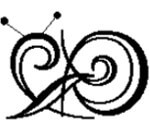Results
The winners of the competition are:
| Grand Pri ze Takuma Ikeda (Panasonic) Gavr=-0.13 Special Award S[dBi] oichi Saku rai (Tokyo Tech) Takuya Mi yasaka (Mitsubishi Electric) |
Admissions
AP LAB will conduct a small antenna competition at the January 2020 Study Group in Takamatsu. Everyone, please apply with all your strength.
Date and time
- Wednesday, January 22, 2020 (scheduled to be from 9:00 to 17:00): Measurement of prototype antennas
- Thursday, January 23 and Friday, January 24, 2020 (scheduled to be from 9:00 to 17:00): Presented at the meeting
- If you are participating in this competition, please plan to participate for 3 days.
Place of Event
- Wednesday, January 22, 2020: Next Kagawa http://www.kagawa-isf.jp/next/
- Thursday, January 23 and Friday, January 24, 2020: Sunport Hall Takamatsu https://www.sunport-hall.jp/
Rules
Compete in a specified frequency range with a specific one-way, one-polarization gain measurement.
Antenna shape:
- Create × antenna of × shape on a 150-150 mm 1.2 mm ground plate. Groundboards provided by the Secretariat are used. (Supplementary Material 1)
- SMA flanges provided by the Secretariat will be installed on the ground plate with screws distributed by the Secretariat. SMA flanges cannot be machined (only can be sidedered). (Supplementary Material 2)
- The antenna fits within a hemisphere of φ40 mm. Antennas must be stored in the hemisphere provided by the Secretariat. It is also possible to remove the hemisphere during measurement.
- It is not possible to change (expand or contract) the antenna shape.
- The hemisphere can be offset against the flange. However, it is not possible for the flange terminal to go out of the hemisphere.
- The shape of the ground plate must not be deformed. Cutting, drilling, etc. are also not allowed.
- It is possible to attach other members to the ground plate or tors the antenna, but the range is limited to the above hemisphere.
- The materials used for antenna manufacturing are limited to passive ones (power supplies such as amplifiers and variable capacities are not allowed).
Observation direction and distance: (Supplemental Document 3)
- Observe any one-way gain specified by the participant (definition of gain will be described later).
- The participant can install the measured antenna at any angle so that any direction above is facing the direction of the measurement antenna.
- The observation distance is a far field.
- The measuring center is the center of the ground plate (the hole part for the central conductor of the SMA flange).
Observed polarization:
- The measurement antenna is V-polarization.
- Participants adapt to the polarization of the measurement antenna by devising the installation of the antenna to be measured.
Measuring jigs:
- A flat foam table is installed in the anego chamber, and participants install a measured antenna in place above it.
- The height from the foaming material table to the measurement center is 150 mm.
- The participants prepare jigs for installation in consideration of the above observation direction and polarization. Jigs are manufactured with low dielectric rate materials such as foaming materials.
Frequency range:
- Range from 1GHz to 2GHz. The number of observation points is 201.
Definition of gain:
- The operating gain (gain including all inconsistency loss, conductor loss, dielectric loss, etc.) is observed, and the average value weighted by the inverse of the square of the frequency[dBi] is defined as Gavr (an index weighted taking into account that the limit value of Q is proportional to the electrical volume).
- The average val[dBi]ue Gavr is calculated by the following formula. [dBi]However, Ga(f) (f=fL+(n-1/2)Δf, n=1,2,… 200) is the operating gain at frequency f (Gavr is standardized so that the value is constant when the total frequency characteristics are constant. In other words, if Ga(f) is -3dBi over the entire frequency range, Gavr will be -3dBi.)
\(displaystyle G_{avr} mathrm{} [dBi]= 10log_{10}left{frac{24}{7}frac{1}{201}sum_{n=0}^{200} frac{10^{frac{G_a(f)}{10}}}{left(f_L+nDelta fright)^4}right} (frequenc\)y is in GHz units)
\(displaystyle f_{L}=1 mathrm{[GHz]}, f_{H}=2 mathrm{[GHz]}\)
\(displaystyle Delta_{f} = frac{f_{H}-f_{L}}{200}\)
How to apply, prepare a manuscript, prepare a presentation
- For applications, please contact the secretary by e-mail and register for the January study group using the application system of the study group (application on the system is scheduled to start on October 21). The deadline for applications is 11/10.
Application format (please send the following contents by e-mail)
###########################################
Subject: Small Antenna Competition Application
To: ap_ac-secretary@mail.ieice.org
Description:
Applicant's name
Affiliation
Contact information (mail address)
Package delivery address
Other questions, etc.
###########################################
- Participants will post technical reports related to this small antenna competition to the january study group.
- It may be measured independently when posting, but the ranking as a competition is made by the evaluation result of 1/22.
- Participants will prepare presentation materials for the study group on 1/23 or 1/24. In that case, the result of the evaluation of 1/22 is incorporated in the appropriate place. The measurement data required to create the presentation materials will be distributed to participants from the measuring instrument used on 1/22 via USB memory, etc.
- The presentation will take 15 to 20 minutes (questioning).
Awards
- Award the[dBi] top prize to the participants with the highest Gavr.
- Evaluation committee members (excluding those from the same organization of the evaluated person) evaluate novelity (out of 10) and effectiveness (out of 10), and award special awards to two people with high average values.
- Click here for the selection rules.
Participation in an exchange of opinions
- We will hold an exchange of opinions after the joint measurement on January 22, so please consider participating in the meeting.
Contact
- For inquiries about the Small Antenna Competition, please contact ap lab secretary (ap_ac-secretary@mail.ieice.org).


